Fairy Ring Champignon / Spring / Summer / Autumn / Edible
Enter a world of enchantment as we embark on a culinary journey to discover the delightful Fairy Ring Champignon mushrooms (Marasmius oreades).
Join us as we unravel the secrets of these edible treasures, renowned for their delicate flavor and whimsical appearance. With their distinctive ring-shaped growth pattern and honey-colored caps, Fairy Ring Champignons exude a captivating charm.
Learn to identify their distinguishing features, understand their preferred habitats, and delve into the culinary wonders they offer. From their delightful nutty taste to their versatile culinary applications, these mushrooms have the power to elevate your dishes to magical heights.
Whether you are an experienced forager or a curious food lover, let the Fairy Ring Champignons awaken your taste buds and ignite your culinary imagination. Embrace the magic of nature’s bounty as we celebrate the enchanting delights that lie within the fairy rings. Get ready to immerse yourself in a world of culinary wonders as we explore the captivating flavors of the Fairy Ring Champignon mushrooms.
Scientific Name
Marasmius oreades
Common Names
Fairy Ring mushroom, Elf rings.
Family
Marasmiaceae
Habitat
In grassy areas such as meadows, lawns, occasionally in sand dunes and woodland edges.
Description
A small but delicious tasting mushroom that usually appears in large numbers growing in rings. Sweet tasting and they dry very well.
Foraging Fairy Ring Mushrooms Video
Identifying Features:
Cap:
Buff to tan in colour the caps are bell shaped when small with a raised umbo, they flatten out with age but still retain the central raised bump. The colour can fade to almost white when old or dry.
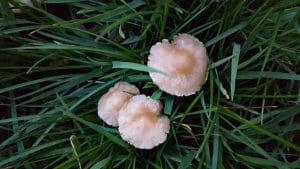
Stem:
Off white. Fibrous and tough.
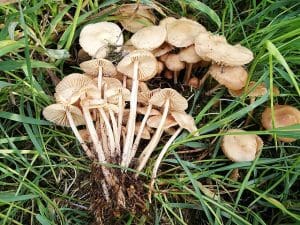
Gills:
White when young darkening slightly with age, they are quite widely spaced and thick and are free from the stem.
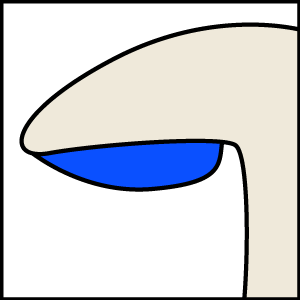
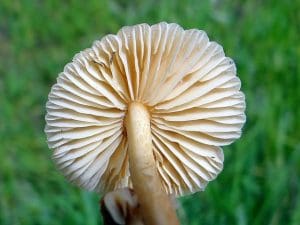
Smell:
Mushroomy
Spores:
White.
Uses
In food
An excellent tasting mushroom, the stems can be quite tough so are often discarded. Traditionally the caps were threaded together with string or cotton and dried.
Harvesting
The mycelium of the fungi feeds the grass making it grow taller, thicker and greener, this can help you spot the mushrooms from a distance.
The rings can vary greatly in size depending on the age of the parent mycelium.
They contain high levels of sugar called trehalose, which prevents cell damage when the mushrooms become extremely dry. This means that they can survive for long periods drying out and rehydrating in the elements when other mushrooms would degrade.
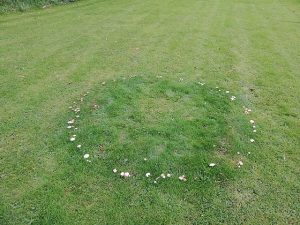
Known hazards
Care should be taken when collecting this mushroom as its look-a-likes can appear in the same rings.
Potential lookalikes
Some of the funnels, in particular, the Fools Funnel (Clitocybe Rivulosa) can look similar and they also sometimes grow in rings but these have decurrent gills whereas Fairy Ring Champignons have free gills.



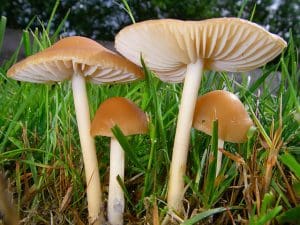
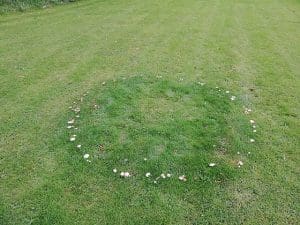



Leave a Reply
You must be logged in to post a comment.